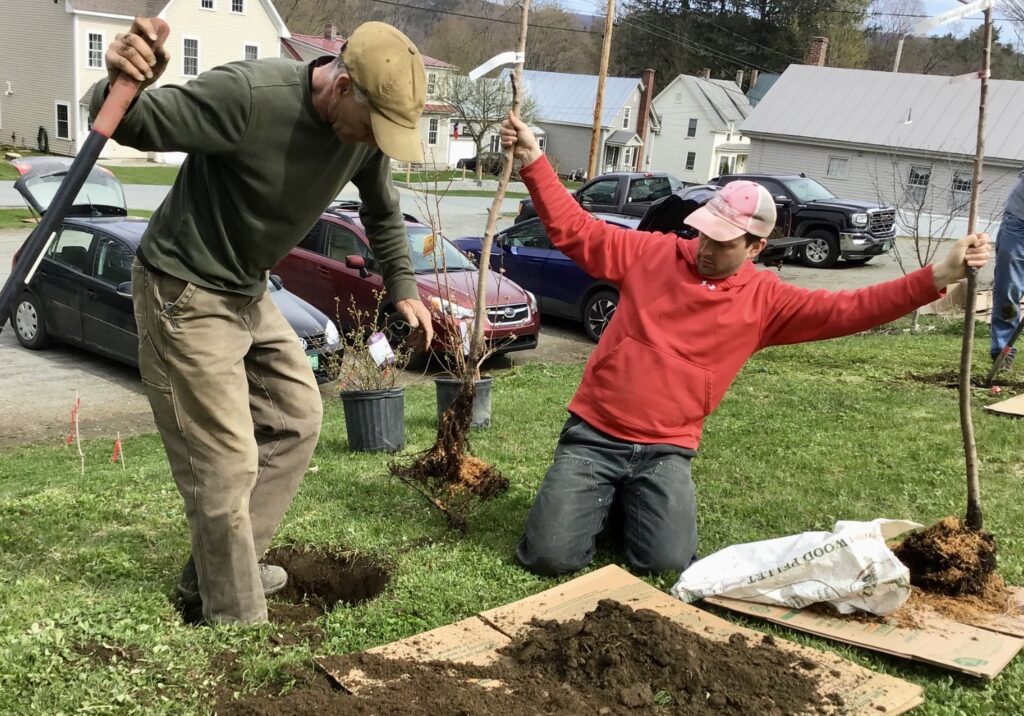 Above left to right: Ken Glick and Nick Wolfe of Taftsville Chapel Mennonite Fellowship plant trees on the church’s half-acre property. Photo by Lynda Knisley.
Above left to right: Ken Glick and Nick Wolfe of Taftsville Chapel Mennonite Fellowship plant trees on the church’s half-acre property. Photo by Lynda Knisley.
At left: Participants at Taftsville Chapel Mennonite Fellowship with their National Wildlife Federation sign. A bluebird is already nesting in the birdhouse atop the sign. Photo by Nick Wolfe.
Participants at Taftsville Chapel Mennonite Fellowship, Taftsville, Vt., spent May 7 getting their hands dirty transforming their half acre of mowed lawn into an edible forest garden. Mennonite Creation Care Network supported bush and tree purchases with a $1,000 Green Mustard Seed Grant.
Taftsville Chapel owns the only open green space in a residential hamlet. Tree clearing for farming has left the local landscape along Happy Valley Road, which would naturally be forest, largely a built environment with mown grass.

Taftsville children enjoying a pile of cardboard soon to be used to suppress weeds. This is a lasagna-style strategy for creating new planting areas. (photo credit: Lynda Knisley)
“We saw an opportunity to re-wild our property with native plantings that provide hospitality to all God’s creation, human and other species alike,” reports Heather Wolfe, the church’s creation care liaison. “Less lawn means less mowing. More native plants mean more habitat and food. Planting a mini orchard of fruit and nuts will create an edible forest garden that honors what the land wants to naturally be while providing sustenance so all creation can flourish,” she adds.
The church is creating a demonstration site for regenerative agriculture, edible forest gardening, and composting. Neighbors will be welcomed, and the orchard will enable the church to supplement its food shelf donations with fresh produce.
The Taftsville congregation drew support and inspiration from a variety of local and national sources. A local hardware store donated a picnic table, and a local tree company donated mulch. They also worked with 350 Vermont’s Rewild Vermont and Mennonite Men’s Join Trees and certified their project as a wildlife habitat with the National Wildlife Federation’s Sacred Grounds Program.
On another front, t he congregation recently received certification as a ‘Cool Congregation’ at the level of 40% or above carbon reduction from Interfaith Power and Light.
